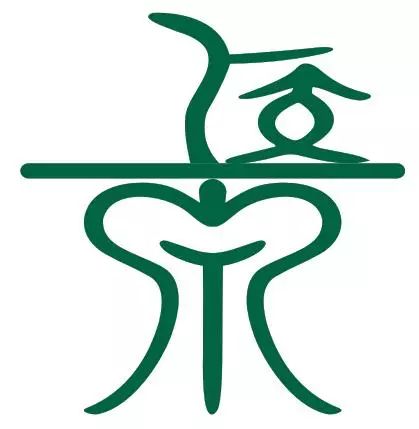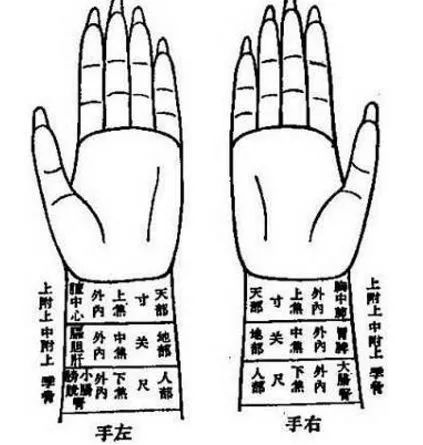Shang Yi Yuan Health Management No Injury, Preserve Health
No Injury, Preserve Health

The human body has approximately 28 types of pulses, each reflecting the body’s functions and corresponding to specific disease ranges. Shang Yi Yuan Health Management shares 15 common pulse types and their corresponding diseases based on TCM syndrome differentiation.
|
1.Shi Mai (Full Pulse): All three pulse positions (cun, guan, chi) are strong. Main disease: Full syndrome; excess pathogenic qi with sufficient righteous qi, where the righteous and evil qi clash, resulting in a strong pulse due to abundant qi and blood. 2.Chen Mai (Deep Pulse): Not palpable with light pressure, but felt with heavy pressure. Characterized by a deep pulse. Main disease: Interior syndrome. Strong indicates interior excess, weak indicates interior deficiency. Pathogenic factors stagnate in the interior, obstructing qi and blood, leading to a strong deep pulse for excess; weak pulse indicates deficiency. 3.Xian Mai (Wiry Pulse): The pulse is straight and long, like a taut bowstring, with significant hardness. Main diseases: Qi stagnation, liver and gallbladder disorders, and pain syndromes. Commonly seen in external pathogenic Shaoyang syndrome, liver diseases, gallbladder diseases, hypertension, arteriosclerosis, and various pain conditions. |
|
4.Hong Mai (Surging Pulse): The pulse is large and comes in waves, strong on arrival and weak on departure, with a wide and fluctuating shape. Main disease: Heat syndrome, excessive yang heat. Commonly seen in patients with high fever. 5.Shu Mai (Rapid Pulse): The pulse is rapid (over 90 beats per minute). Characterized by a faster pulse than normal. Main disease: Heat syndrome. Strong indicates excess heat, weak indicates deficient heat. Initial stages of external heat illness, excessive internal heat, and rapid blood flow lead to a strong rapid pulse for excess heat; weak rapid pulse indicates internal deficient heat. |
6.Cu Mai (Interrupted Pulse): The pulse is rapid with irregular pauses. Indicates excessive yang heat or stagnation of qi, blood, phlegm, and food, seen in conditions of qi and blood stagnation, swelling, pain, and various excess heat syndromes. A fine and rapid pulse often indicates a state of collapse.
|
7.Hua Mai (Slippery Pulse): The pulse is smooth and flowing, like rolling beads, often associated with excess pathogenic factors and internal stagnation of phlegm and food. This pulse can also be seen in healthy individuals with abundant qi and blood, and is common in pregnant women. In pathological conditions, it is often seen in phlegm-dampness, food stagnation, blood stasis, and excess heat, such as various inflammations, indigestion, and amenorrhea. 8.Fu Mai (Floating Pulse): Palpable with light pressure, but diminishes with heavy pressure. Characterized by a superficial pulse. Main disease: Exterior syndrome due to external pathogenic factors lingering on the surface, where the defensive qi resists the pathogen, resulting in a superficial pulse. A strong floating pulse indicates exterior excess; a weak floating pulse indicates exterior deficiency. Chronic internal injury due to deficiency of yin blood and insufficient yang qi can lead to a floating pulse that is large and weak, indicating a critical condition. |
9.Huan Mai (Slow Pulse): Four beats per breath, neither fast nor slow, neither strong nor weak, with a gentle pulse, indicating normal stomach qi, seen in healthy individuals. In pathological conditions, it is seen in dampness obstructing qi mechanism or post-illness recovery.
|
10.Chi Mai (Slow Pulse): The pulse is slow (under 60 beats per minute). Main disease: Cold syndrome. Strong indicates excess cold, weak indicates deficient cold. Cold causes stagnation, slowing down the movement of qi and blood, leading to a strong slow pulse for excess cold; weak slow pulse indicates deficient cold. Athletes and heavy laborers often have a slow pulse as a physiological state. 11.Xi Mai (Thin Pulse): The pulse is thin like a thread, with distinct rises and falls. Main disease: Deficiency syndrome, often seen in yin deficiency and blood deficiency. Also indicates dampness. Yin blood deficiency cannot fill the pulse channel, or dampness obstructs the pulse channel, resulting in a thin pulse. 12.Xu Mai (Weak Pulse): All three pulse positions are weak. Palpable only with heavy pressure, indicating a soft pulse, which is a general term for all weak pulses. Main disease: Deficiency syndrome, often due to both qi and blood deficiency, making it difficult to propel the pulse, hence it feels empty. |
|
13.Jie Mai (Knotted Pulse): The pulse is slow with irregular pauses. Main disease: Excessive yin causing qi stagnation, cold phlegm, and blood stasis. Analysis: Internal cold stagnates, obstructing the pulse channel, leading to a slow pulse with intermittent stops. Cold phlegm and blood stasis cause qi stagnation, resulting in a weak pulse that is slow and stops intermittently. 14.Se Mai (Choppy Pulse): The pulse is rough and stagnant, like a knife scraping bamboo, often associated with deficiency of essence, blood, qi stagnation, and blood stasis, commonly seen in anemia, blood loss, postpartum conditions, and blood stasis disorders. 15.Dai Mai (Intermittent Pulse): The pulse has regular pauses, cannot return on its own, and resumes after a long time, indicating a regular interval of pauses, with the pulse stopping at a certain count, indicating a sign of weak organ qi, seen in arrhythmias such as bigeminy and trigeminy. |
Diagnosing pulses and prescribing medicine requires careful consideration; the hands may not yet establish a formula, but the eyes have already opened (indicating that one should not rashly experiment with pulse diagnosis without proper training). For strong lung excess, a major purge is indicated, using Qian Hu (Peucedanum) and Zhi Shi (Bitter Orange) with Ju Hong (Tangerine Peel); for weak lung deficiency, a major tonification is indicated, using Dang Shen (Codonopsis) and Wu Wei Zi (Schisandra) as support; for strong lung excess with wind-heat, use Jiu Zhi (Wine-Processed) Qin Pi (Fried Sophora) and Yuan Shen (Rehmannia) as assistance; for weak lung deficiency with wind-cold, add Huang Dong (Winter Jasmine) and Zi Wan (Aster) with Ma Huang (Ephedra).
For strong heart excess, a major purge is indicated, using Chang Pu (Acorus) and Yu Jin (Curcuma) with Ling Xiao (Lilium); for weak heart deficiency, a major tonification is indicated, using Jujube Seed (Ziziphus) and Yuan Zhi (Polygala) as support; for strong heart excess with wind-heat, use Huang Lian (Coptis) and Lian Qiao (Forsythia) as assistance; for weak heart deficiency with wind-cold, add Bai Fu Zi (Typhonium) and Tian Ma (Gastrodia) with Bi Ba (Piper).
For strong stomach excess, a major purge is indicated, using Da Huang (Rhubarb), Zhi Ke (Bitter Orange), and Bin Lang (Areca); for weak stomach deficiency, a major tonification is indicated, using Bai Zhu (Atractylodes), Yun Ling (Poria), and Zhi Qi (Astragalus) as support; for strong stomach excess with wind-heat, use Zhi Mu (Anemarrhena) and Shi Gao (Gypsum) with Gan Cao (Licorice); for weak stomach deficiency with wind-cold, add Gan Jiang (Dried Ginger), Bai Zhi (Angelica Dahurica), and Gao Ben (Ligusticum).
For strong liver excess, a major purge is indicated, using Tao Ren (Peach Kernel), Cu Jun (Rhubarb), and Ling (Sparganium); for weak liver deficiency, a major tonification is indicated, using Dang Gui (Angelica Sinensis), Chuan Xiong (Ligusticum), and Xiang Fu (Cyperus) as support; for strong liver excess with wind-heat, use Chai Hu (Bupleurum) and Sheng Di (Rehmannia) with Bai Shao (White Peony); for weak liver deficiency with wind-cold, add Wu Yao (Lindera) and Ai Ye (Mugwort).
For strong kidney excess, a major purge is indicated, using Mang Xiao (Glauber’s Salt), Huo Ma Ren (Hemp Seed), and Yu Ren (Coriander); for weak kidney deficiency, a major tonification is indicated, using Shu Di Huang (Rehmannia) and Shan Yao (Chinese Yam) as support; for strong kidney excess with wind-heat, use Huang Bai (Phellodendron) and Dan Pi (Moutan) with Bi Xie (Dioscorea); for weak kidney deficiency with wind-cold, add Rou Gui (Cinnamon) and Ba Jiao (Piper) with Xiao Hui Xiang (Fennel).
This method, though akin to waiting for a rabbit by the stump, serves to train novice physicians to open their minds.

